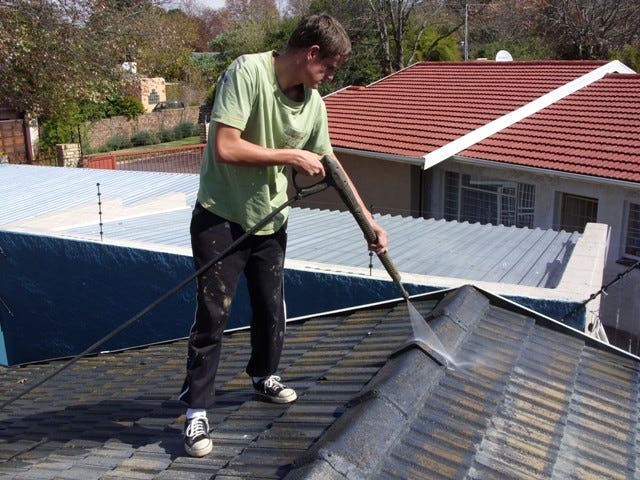Understanding Roofing Warranties
When it comes to one of the most critical components of your home – the roof – ensuring its longevity and reliability is paramount. A robust roofing warranty can provide you with the peace of mind that your investment is protected against unexpected issues. However, not all warranties are created equal, and deciphering the fine print can be a daunting task. In this comprehensive guide, we’ll delve into the world of roofing warranties, shedding light on what’s covered and what’s not.
The Importance of a Roofing Warranty
Imagine you’ve just had a new roof installed on your home. It looks spectacular and gives you a sense of security. But what happens when a sudden storm unleashes its fury, causing unforeseen damage to your roof? This is where a roofing warranty steps in as your safety net. A roofing warranty is essentially a contract between you and the manufacturer or roofing contractor, outlining the terms and conditions under which they’ll repair or replace your roof in case of specific damages.
Types of Roofing Warranties
- Manufacturer’s Warranty: This type of warranty is provided by the manufacturer of the roofing materials. It covers any defects in the materials themselves, such as shingle defects or premature deterioration. Manufacturer’s warranties can vary in duration and coverage.
- Workmanship Warranty: Offered by the roofing contractor, this warranty covers any issues arising from the installation process. If the roof doesn’t perform as expected due to installation errors, a workmanship warranty should cover the cost of fixing the problems.
- Extended/Upgraded Warranty: Some manufacturers and contractors offer extended warranties that provide coverage beyond the standard terms. These may include longer periods of coverage or enhanced protection against specific types of damage.
What’s Typically Covered
- Material Defects: Manufacturer’s warranties usually cover defects in roofing materials, such as shingle granule loss, premature cracking, or curling.
- Premature Aging: If your roof shows signs of aging well before its expected lifespan, a warranty may cover the necessary repairs or replacement.
- Water Leakage: Most warranties provide coverage for water leaks that result from material defects or improper installation.
- Workmanship Errors: A workmanship warranty will address problems arising from installation errors, like improperly fastened shingles or inadequate flashing.
- Wind and Hail Damage: Many warranties cover damage caused by strong winds and hail, as long as the roofing materials are rated to withstand such conditions.
- Manufacturer Bankruptcy: Reputable manufacturers often include provisions to protect homeowners in case they go out of business.
What’s Often Not Covered
- Normal Wear and Tear: Warranties usually don’t cover the expected gradual wear and tear that occurs over time.
- Neglect or Poor Maintenance: If you fail to properly maintain your roof, any resulting issues might not be covered.
- Roof Modifications: Making unauthorized modifications to your roof, such as adding new equipment without proper installation, can void your warranty.
- Acts of Nature: While some warranties cover wind and hail damage, they might exclude damage from extreme natural disasters like earthquakes or hurricanes.
- Non-Roofing Issues: Problems caused by other parts of your home, like faulty gutters or improper ventilation, are typically not covered.

Understanding Warranty Limitations
It’s crucial to read and understand the warranty documentation thoroughly. Here are some key points to consider:
- Duration: Warranties have specific durations. A manufacturer’s warranty might cover 20 to 50 years, while workmanship warranties could span 2 to 10 years.
- Prorated Coverage: Some warranties offer prorated coverage, meaning the coverage decreases over time.
- Transferability: Check if the warranty is transferable if you sell your home. This can be an attractive feature for potential buyers.
- Documentation: Maintain records of inspections, repairs, and any maintenance work. These can be crucial to support your warranty claims.
Making a Claim
If you encounter issues covered by your warranty, follow these steps:
- Contact the Provider: Reach out to the manufacturer or contractor and provide details of the problem.
- Document the Issue: Take photos and notes to document the problem thoroughly.
- Follow Procedures: Adhere to the procedures outlined in the warranty documentation. This might involve inspections by authorized representatives.
- Keep Records: Maintain records of all communication, including emails and phone calls.
In Conclusion
A roofing warranty is your safeguard against unexpected roofing issues. Understanding the coverage and limitations of your warranty is vital for ensuring you get the most out of it. Remember that regular maintenance, proper installation, and adherence to the warranty terms will contribute to the longevity and effectiveness of your roofing warranty. When investing in a new roof, take the time to research and select warranties that align with your needs and offer the protection you deserve. For further help, tips, and advice about roofing, visit For Zups Construction to learn more.








